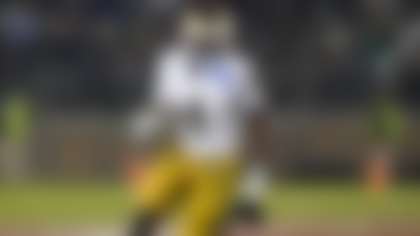This week's best of MomsTeam.com, a website that focuses on health and safety issues for youth sports:
- Last week, around the same time as MomsTeam's latest batch of articles hit this site, all talking about the new Virginia Tech-led study reporting that newer model Riddell football helmets did a better job of reducing concussion risk in college players than a much older model Riddell helmet, newspapers and websites were reporting a story about research that seemed to go in completely the opposite direction in finding that football helmets did "very little" to protect kids against the rotational forces that cause concussion. While most newspapers and reporters -- with some notable exceptions -- elected to take the news, based on an abstract of a research paper not a peer-reviewed study, largely at face value in publishing stories, MomsTeam took a pass. In a new blog, Brooke de Lench provided a glimpse into the editorial process that led to the decision not to publicize the research.
- That MomsTeam elected not to publish a story based on an abstract of a research paper doesn't mean that there aren't exceptions to that rule. A case in point: A report released today about research showing that a simple vision test performed on sidelines was able in a study of college athletes to identify nearly eight out of 10 of those later found to have suffered a concussion. More remarkably, when combined with screens cognition and balance, the battery of tests correctly identified concussed athletes with 100 percent accuracy. As de Lench and MomsTeam senior editor Lindsay Barton reported, the research is just the latest to show that the King-Devick test, consistent with earlier peer-reviewed studies, can help sideline personnel determine when an athlete should be removed from play and referred for a more complete clinical exam for concussion.
- There is good news and bad news in a first-of-its-kind study about implementation of the nation's first youth sports concussion safety legislation in Washington state. As Barton reported, the good news is that football and soccer coaches at public high schools in the state nearly all reported completing the required concussion education annually, concussion knowledge among coaches was high and nearly all reported being somewhat comfortable or very comfortable in deciding whether an athlete needed an additional evaluation for a suspected concussion. The bad news is that concussion education of athletes and parents was much less extensive, with about a third of athletes and more than half of parents not receiving any concussion education beyond signing a concussion and head injury information sheet.
- Treating sports injuries with rest, ice, compression and elevation (RICE for short), has been a first-aid staple for decades. But a new book called "Iced! The Illusionary Treatment Option" by Gary Reinl, a former personal trainer and the developer of an electronic stimulation device, is fueling a debate in the sports medicine community about whether ice still has therapeutic value in treating sports injuries -- with the doctor credited with coming up with the acronym, the National Strength and Conditioning Association and some prominent athletic trainers now coming out against its use. But while Reinl believes that the "ice age is over," there are still many who still believe in the value of ice, especially in the period immediately after injury, in order to reduce acute-injury bleeding, relieve post-activity soreness and for pain relief. Where does MomsTeam's expert physical therapist, Keith Cronin, stand in the ice versus no ice debate? Turns out he isn't ready to advise sports parents to put the ice on ice.
-- MomsTeam.com



